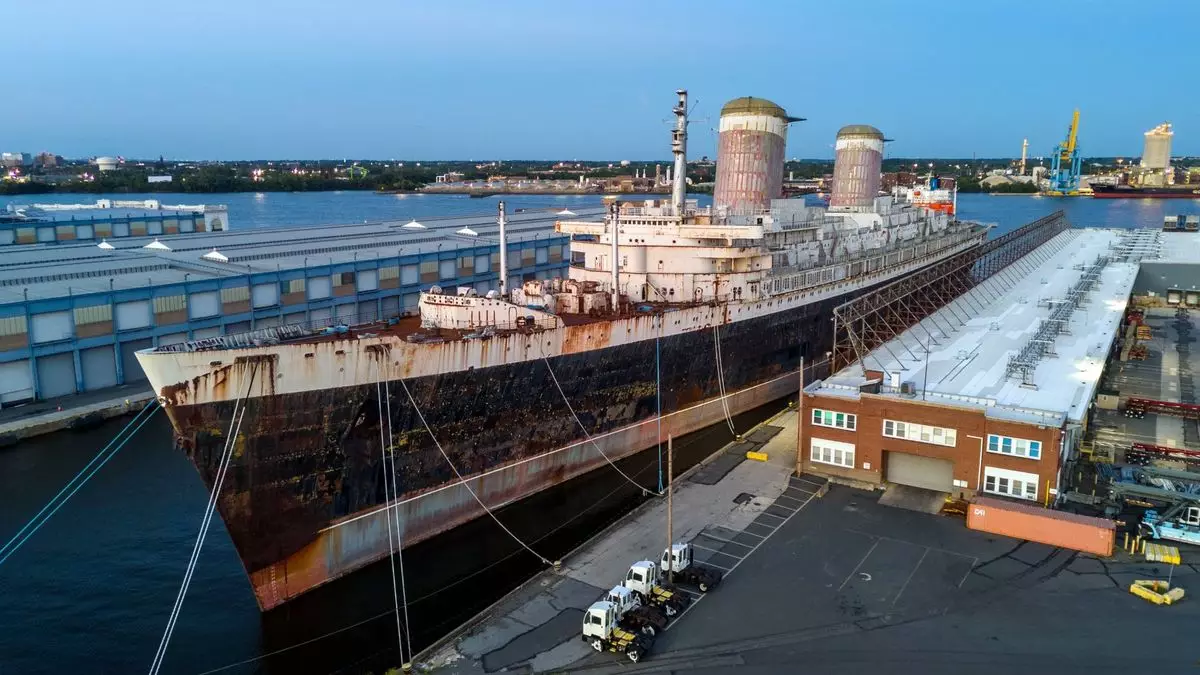The SS United States, once a paramount of transatlantic travel and a symbol of American maritime engineering, is facing a poignant future. This iconic vessel, which once navigated the tumultuous waters of the Atlantic at remarkable speeds, is on the brink of being transformed into the world’s largest artificial reef. Recent announcements from the Destin-Fort Walton Beach area signal that plans are being made to sink the grand liner off the northwest coast of Florida, a move aimed at preserving its legacy while simultaneously contributing to the local marine ecosystem.
Commissioned in the early 1950s, the SS United States pushed the boundaries of speed and luxury during its operational years from 1952 to 1969. At a staggering top speed of 44 knots, it famously claimed the Blue Riband for the fastest transatlantic crossing, completing the journey from New York City to Cornwall, UK, in a swift three days and ten hours. This achievement not only underscored American innovation but also set a benchmark in the maritime industry.
However, as the jet age took off and aviation began to dominate long-distance travel, the SS United States was eventually retired. The vessel’s last operational years left it docked in Philadelphia, where it has remained since 1996, slowly declining from disuse while its storied history became increasingly overshadowed by modern advancements in cruise ship design.
In a collaborative effort, the Destin-Fort Walton Beach area and the SS United States Conservancy are orchestrating a plan that holds significant implications for both the ship and the local environment. The approved contingent contract suggests that the ship will not only serve as a historical artifact but will also be part of an artificial reef initiative aimed at enhancing local marine biodiversity.
Tourism Director Jennifer Adams articulated the excitement surrounding the project, noting that the SS United States would enrich the area’s reputation as a premier diving and fishing destination. By providing essential habitats for marine life, the ship’s sinking would create a new ecosystem, fostering both tourism and conservation. The conversion into an artificial reef fits within a broader trend where shipwrecks are intentionally sunken to bolster fish populations and provide unique diving experiences.
Despite the enthusiasm surrounding the project, significant hurdles remain ahead. Legal mediations required by the U.S. District Court must clear before the plan can fully materialize, a process that could take several weeks. Furthermore, transporting and preparing the SS United States for sinking is estimated to take about 18 months. The cost associated with this endeavor has been conservatively estimated at $10.1 million, not factoring in the additional funds needed for the establishment of an educational museum dedicated to the ship’s legacy.
The conservancy has fought diligently to keep the ship out of the scrapyard for more than a decade, viewing this project as a way to honor its historical significance while rejuvenating local marine environments. The potential museum would serve not only as a tribute to the ship’s storied history but also as a means of educating future generations about maritime heritage, thus securing its legacy for years to come.
The fate of the SS United States represents a larger narrative about how society values history and heritage. By repurposing the iconic vessel into an artificial reef, we are not simply allowing a significant piece of maritime history to fade away; rather, we are integrating it into a new ecosystem that will continue to serve meaningful purposes. At its core, this initiative speaks to a growing recognition of the need to blend preservation efforts with modern environmental stewardship.
As discussions surrounding maritime history and conservation strategies continue to evolve, the case of the SS United States serves as a compelling study on the intersection of heritage and sustainability. Ultimately, while we bid farewell to this majestic ship’s old life, we simultaneously welcome the new beginnings that lie ahead in the waters of Florida’s coast.

